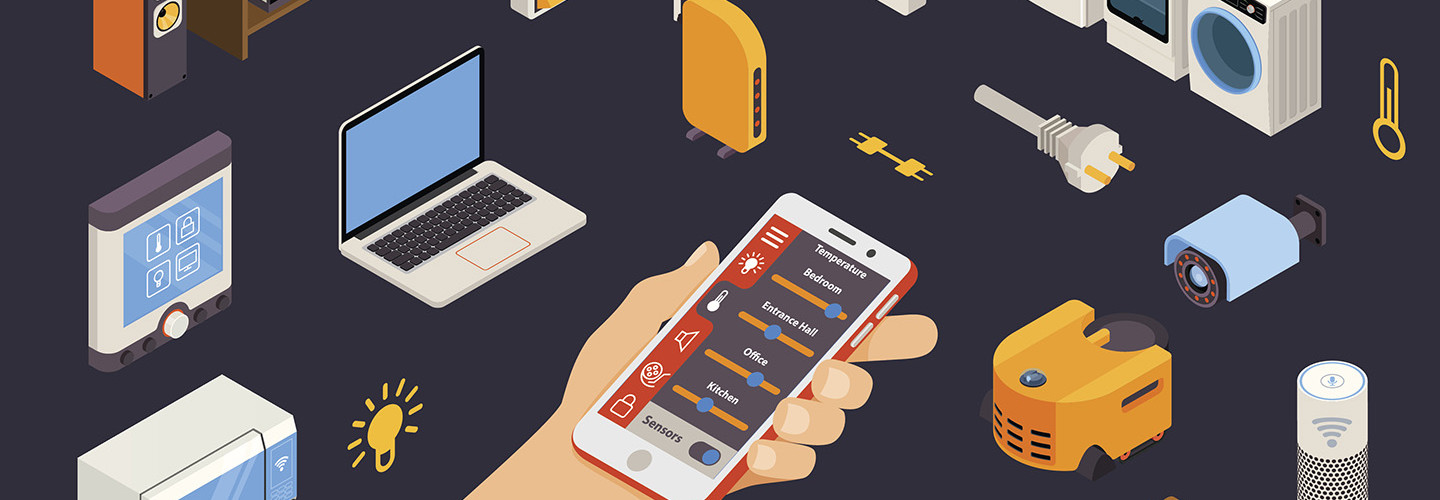Internet of Things Promises Smart Future for Campus Infrastructure
Traditional approaches to academia — studying the classics, dedicating years to esoteric research — have given higher education a reputation in some quarters as being less than agile. But that doesn’t mean campus communities can’t be incredibly innovative, and the Internet of Things just might prove it.
In recent months, I’ve seen several speculations that an influx of IoT devices will hit higher education sooner than other industries. To a large degree, that stems from students, who are already coming to campus with an average of seven IoT devices each. Wearables and other smart devices are transforming pedagogy, giving faculty and students new ways to customize the learning experience. Campuses are taking notice of the IoT’s potential, establishing centers and research labs to design new applications.
These developments are exciting, but some of the most promising IoT advancements are happening behind the scenes, in basic yet critical campus operations such as parking, transportation, building management and utilities.
Facility Management of the Future with Tech
As the IoT matures, infrastructure applications may be limited only by the imagination. Smart sensors could enable staff to track the location and maintenance condition of a transportation fleet. Building sensors could provide data on facility usage, informing capital planning projects and space allocations. Smart parking lots could direct campus visitors to lots with available space, while IP-enabled video cameras tied to analytics software flag anomalous activity so that public safety officers can investigate.
Carnegie Mellon University in Pittsburgh, which aspires to be a leader in the IoT space, is an impressive example. CMU saw an opportunity to build on its existing “smart building” technology: Facilities already used sensors to capture data on lighting, security, temperature control and other areas, yet they lacked an overarching, integrated system to manage all the information and use analytics to improve performance. That drastically limited CMU’s potential gains in energy conservation and cost savings.
In pursuit of better insights and data-driven efficiencies, CMU partnered with IBM to develop a whole new approach to building management. Part of that solution is cloud-based analytics software that CMU can use to improve building performance — hitting environmental, operational and financial measurements. What’s different about this approach, for example, is that instead of simply receiving an alert that a specific classroom is overheated, a building manager would also receive diagnostic information to correct the problem and prevent it from reoccurring. Through a Software as a Service hosting arrangement with IBM, CMU can leverage the solution with as much flexibility and scalability as it needs.
The Best Tech Innovations May Be Yet to Come
Although the scale of CMU’s building management initiative may dwarf the more modest, one-off IoT applications that many campuses are experimenting with, this type of comprehensive digital connectedness likely represents the future of smart infrastructure. It promises to help institutions reap cost savings, achieve sustainability targets and increase efficiency by capturing and leveraging rich data.
In years to come, our higher education campuses will see an intriguing, imaginative array of devices powered by the IoT. College students will continue to study the classics, and academic researchers will still engage in complex, painstaking research. But one thing seems certain: They will do all of this in an environment that’s earned a new reputation as innovative, inventive and, one might say, agile.
This article is part of EdTech: Focus on Higher Education’s UniversITy blog series.









